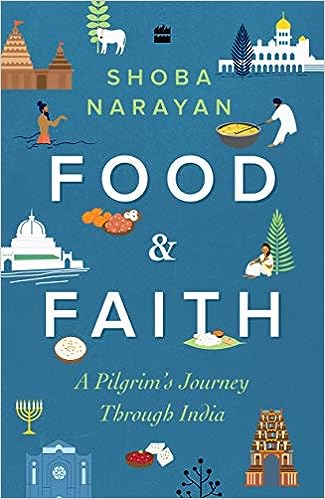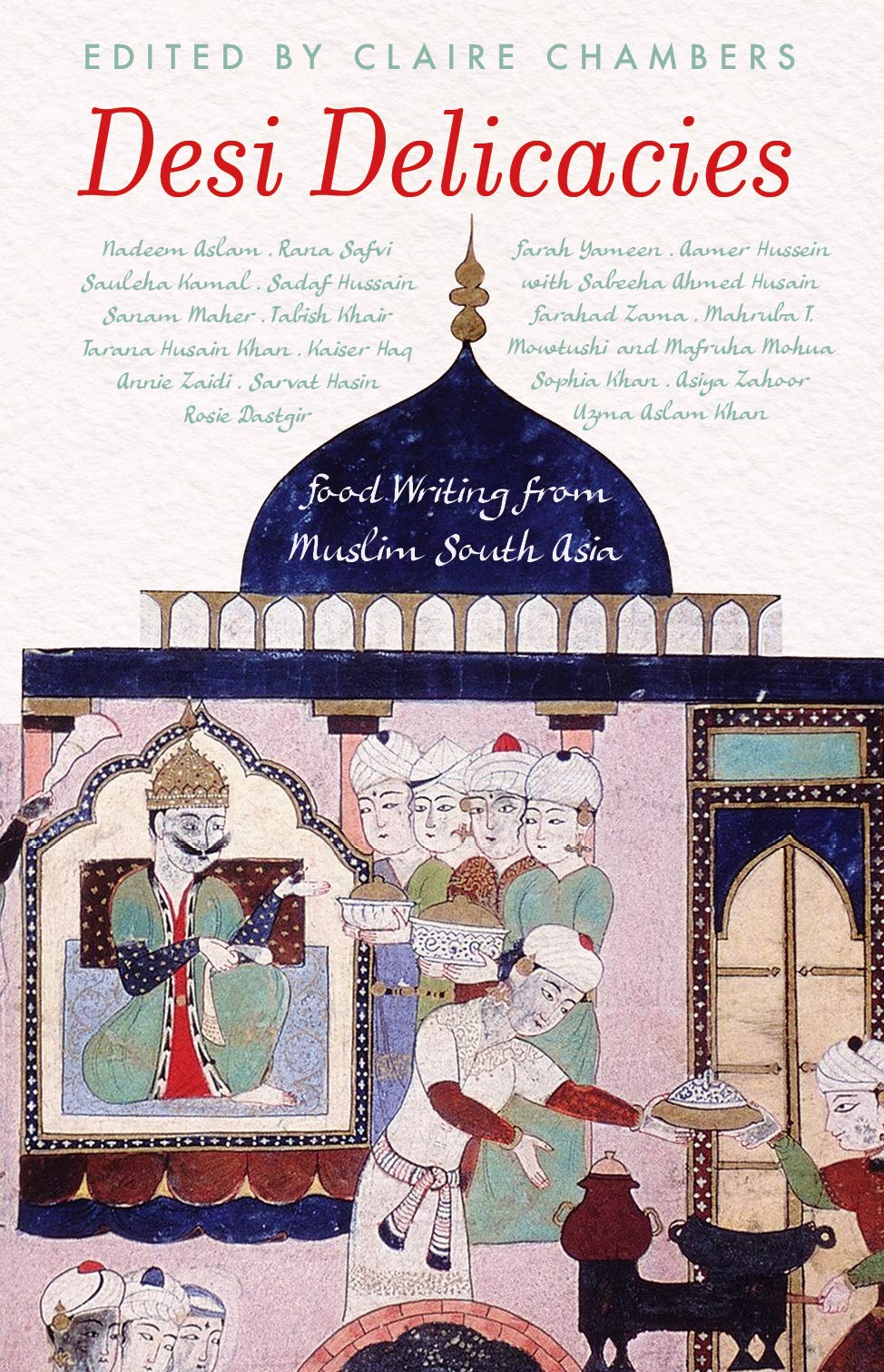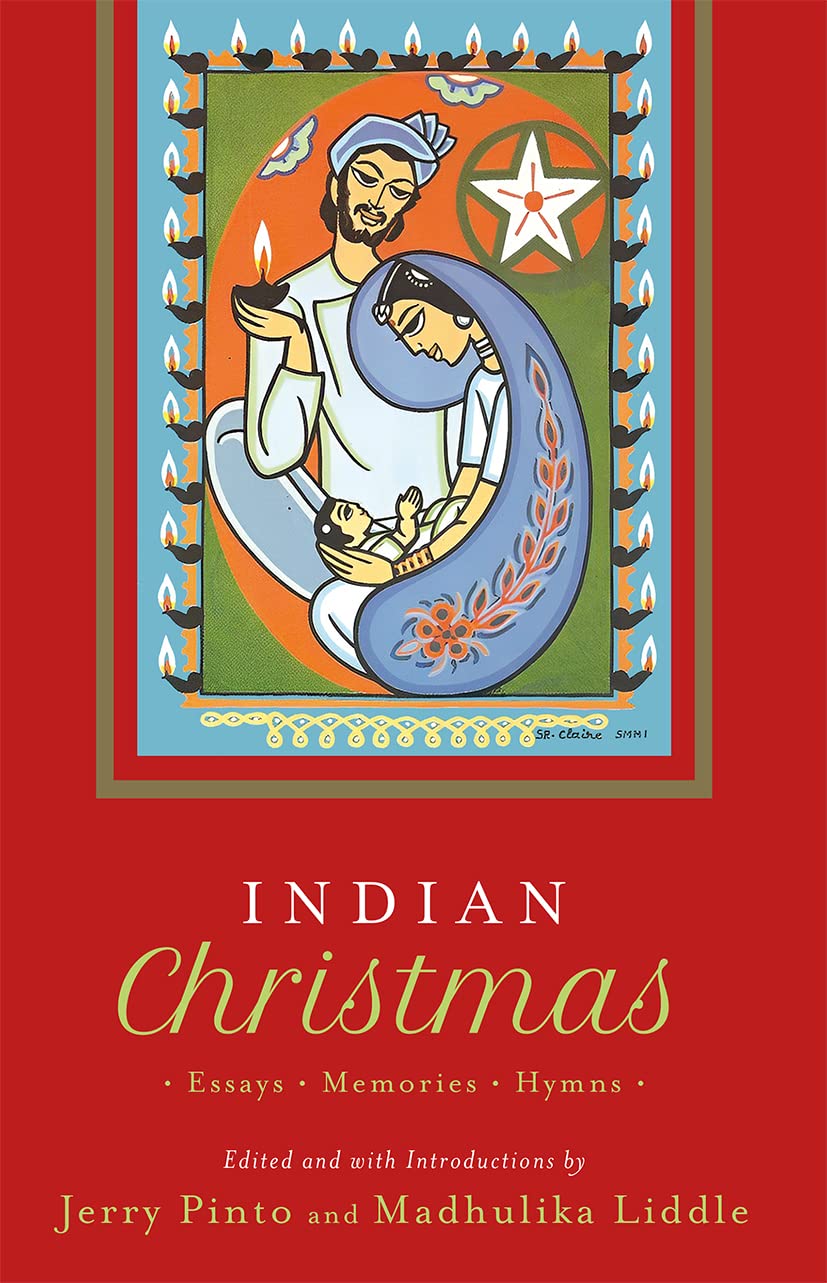A carefully catalogued collection of five books that we think are essential to understand India’s diverse culture, faiths, and traditions, all interspersed with food. Add them to your TBR list.
For our first enthuGuide in this two-part series, our team has picked five books about how Indian communities celebrate with food. This collection of stories, memoirs, essays, poems, and recipes offer varied perspectives on India’s faiths and festivals, and their associated culinary traditions.
Food and Faith: A Pilgrim’s Journey through India by Shoba Narayan
In a country that is as culturally diverse as India, we need to contemplate our intersectionalities. Where do we meet? Our foods and beliefs, rituals, and myths lay miles apart – each with its own distinctive beauty.
Through her book, Food and Faith: A Pilgrim’s Journey through India, Shobha Narayan explores India’s religious polarities through food, ancient traditions and myths, sacred offerings, and the history behind them all.
Writers and reviewers across publications have tagged Narayan’s book as ‘Food as the Gateway to Heaven’, ‘Finding Faith in Sacred Meals’, ‘Food through Faith’. In seeking to understand the connections between food and faith, Narayan journeys to various temples, shrines, synagogues, and churches across India focusing on their sacred food offerings. From Amritsar’s langar and Madurai’s dosai, to Jewish halva in Mumbai and Goa’s communal feasts, Narayan talks about the commonalities between faiths and rituals, noting that food should nourish the body and soul alike.
In an interview with Siasat, Narayan explains, “Food seemed like an innocuous way to do this. Sacred food as a way of fusing a secular identity with spirituality in some form: that was my plan. What I didn’t know, what I didn’t anticipate, is that once you step into the realm of faith, your heart and emotions open in ways that you cannot predict or control. You’ll see when you read the book.”
An excerpt from the book:
The kitchens are vast — spread over an acre. If you stand on the roof of the Puri library across the street from the temple kitchens and bend over till you almost fall down, you can see the courtyards leading into the kitchens using a pair of binoculars. This is where 200 junior cooks, who are not yet allowed to enter the kitchens, do the prep work. They grate hundreds of coconuts: a tiring, thankless job, made tolerable by chanting the name of the Lord. They chop a mountain of vegetables; wash the earthenware pots that are used. Inside, it is said, are multiple rooms — some say nine; others say 32. Here, 500 main cooks, or suaras, as they are called, do the actual cooking along with 300 assistant cooks. Even by Indian wedding standards — where thousands of guests are fed at one go — the production capacity of the Puri temple kitchens is staggering.
Festival Stories: Through the Year by Rachna Chhabria
In this children’s book, Rachna Chhabria employs her storytelling skills to bring to life details about the year-round festivals celebrated in India. Narrated through the words of two protagonists, twins Natasha and Nikhil, Chhabria draws out the cultural aspects of different festivals, while weaving in charming details about rituals, celebrations, customs, and the feasts associated with them.
On Shyamla’s World, Chhabria writes, “There are certain pan-Indian festivals everyone knows about, but people living in different parts of India are not very familiar with festivals celebrated in other parts of our country. My aim was to give an interesting overall view of all the festivals we celebrate, this makes the book relevant throughout the year. Every community finds a representation in my book.”
An excerpt from the book:
“Earlier, as part of Lohri celebrations, children went around their neighbourhood singing the traditional folk songs of Lohri. I remember my grandmother telling me, when I was young, that while one child sang the folk song, the other children screamed “ho” at the end of each line. After the song was over, the people whose house the children were visiting were expected to give the kids snacks and a treat.” Chewing on a small piece of sugarcane, Dadi continued, “No one turned away the children empty-handed as it was considered inauspicious. And if a family was celebrating something auspicious, like a marriage or the birth of a baby, then the children demanded even more treats.”
Discarding her chewed piece of sugarcane into a paper napkin, she smiled. “My own grandmother would go around singing the folk songs while her siblings joined in with the refrain of “ho”.”
Indian Christmas by Madhulika Liddle and Jerry Pinto
Indian Christmas is a delightful collection of essays, memoirs, recipes, photos, poems, and hymns by Madhulika Liddle and Jerry Pinto. This book is a deep dive into the celebrations of the festival and the various traditions, customs, and facts associated with it.
The anthology compiles accounts from various writers such as Jane Borges, Damodar Mauzo, Elizabeth Kuruvilla, and a domestic worker in Jharkhand – Mary Sushma Kindo.
Pinto writes, “Christmas was about Jesus, yes, and about the Nativity, yes, but it was also about the food.” There is a story about the first Christmas cake being baked in Kerala (1883), author Easterine Kire’s account of how women in her village used ammunition boxes to bake Christmas cakes. Alo in here, Tagore’s poems on Jesus’ birth written in Bengali and English, and Mughlai paintings depicting Mary in sarees and wearing a nose pin. Indian Christmas traces the journey of Christianity in India and the celebration of its festivals with a desi twist.
In an interview on ABP Live Podcasts, Madhulika says that Christianity being a Western religion is a complete myth, Christmas in India is celebrated with a heavy local influence and with our very own local languages. The regional diversity of India is portrayed very vividly when we celebrate Christmas.
An excerpt from the book:
From the introduction by Madhulika Liddle, “This is India. An India where rangolis and kolams, gujiyas and faral, mango leaves and dholaks have all been traditionally part of indigenous celebrations… Where we bring in all our favourite (and familiar) ideas of what a celebration should be, and fit them together into a fiesta all our own.”



Desi Delicacies: Food Writing from Muslim South Asia by Claire Chambers
Desi Delicacies is Claire Chambers’ lovely compilation of essays, stories, and recipes from the kitchens of Muslim South Asians. The anthology has accounts from writers, historians, and chefs alike featuring pieces from Rana Safvi, Sadaf Hussain, Asiya Zahoor, Nadeem Aslam, and more. Every essay and story closes with a recipe from the author.
Through the book, Chambers and her writers shine a light on forgotten ingredients, local food heritages and cultures, and the rich variety of beliefs that reflect in our traditions and memories.
The book’s nine essays and nine stories are delightful, with lines like, ‘Masala aisa bhuno jaise dushman ka kaleja! (Roast the spices as passionately as if it were the enemy’s heart!)’ from “Qissa Qorma aur Qaliya ka”. In “The Homesick Restaurant”, Nadeem Aslam writes “Each Pakistani woman spices her curries in her own way; each pan has a different aroma, the way each human body smells slightly different. The thickness, texture, and the width of each woman’s chapati is also unique to her, depending on the size of her hands, the shape of her fingers, and the strength with which she kneads the dough.”
Claire Chambers in a conversation with Sonam Joshi for The Times of India says, “The thing I was most struck by is how varied and impossible to pigeonhole Muslim South Asian food is… Muslim South Asian food has influences from and on Hindu, Parsi, Anglo-Indian, and the Arab world too. Really there is so much to be said about this varied and rich culinary world, that I would need to edit a sequel or two to come close to doing it justice”.
Food, Faith, and Gender in South Asia: The Cultural Politics of Women’s Food Practices by Dr Nita Kumar (Editor) and Dr Usha Sanyal (Editor)
An eye-opening volume of essays, this book talks about a host of social, economic, cultural, and religious occurrences in which women find themselves. How do women separate their identity from the social imputations they engage with? How do food and the practices that come with it (fasting and feasting) define women’s role in private and public spaces? What is the interconnectivity of faith, food, the subordination of women, and establishing identity and community?
Sanyal and Kumar explore all of the above and more by tying together narratives revolving around cooking, fasting, storing, eating, and commensal practices. From the Hindus and Muslims of South Asia, and from Sri Lankan Buddhist women to the diaspora of the US and UK, it seeks to understand our many multifaceted gender and food roles.
The introduction reads, “We have a social fact before us: women are the primary producers and suppliers of ‘food’ because of their bodies’ overdetermined iconicity with fields which yield food. But more accurately, women are in a grey area between nature and culture.”

